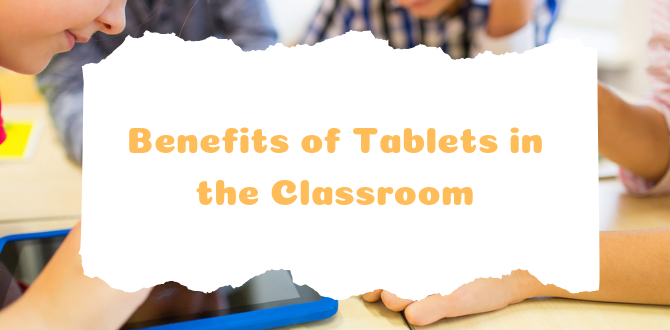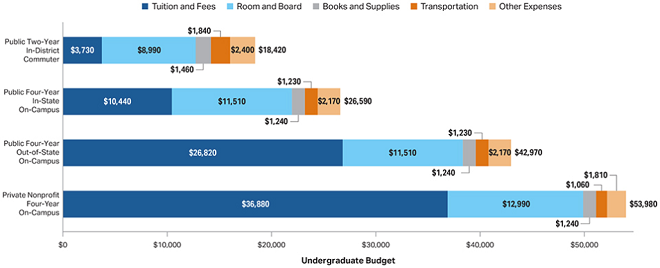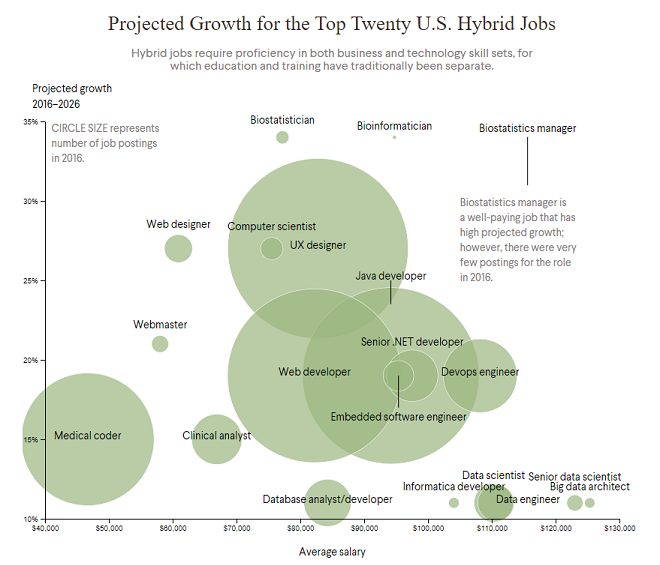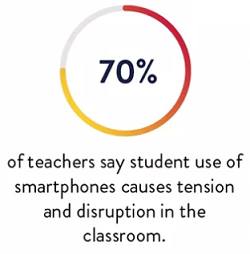A distraction or a new interactive way to learn? Like it or not, the tablet device is invading traditional school. Forget the backpack stuffed with books. It’s the era of the tablet and digital training. Learn more about the advantages of using tablets in the classroom!

Technology is invading the education field at an increasing pace. The process has effectively evolved from learning on blackboards to learning on the best interactive whiteboard that is much more reliable in this day and age. Our generation dreamt about using desktop computers to solve math sums, write and draw. The next generation speculated about the benefits of having laptops in the classroom. Sounds awkward in our days, doesn’t it? It’s now the era of a tablet, that small immediately operational vehicle of technology and knowledge.
In terms of education, the tablet is a fairly priced, mighty computer that enriches training through the use of an intuitive touchscreen and simple controls. The advantages of using electronic devices in learning are common knowledge. An increasing number of traditional classrooms factor in personal-use tablets as part of the curriculum.
As always, some conservative educators are concerned with the tablet being a major distraction. Others argue it’s not only a sophisticated toy but a versatile instrument revolutionizing the modern instruction landscape. There are over 15,000 educational apps in Apple’s App Store alone, and Google Play is neck and neck. The app ecosystem provides an abundance of learning content for all ages and various knowledge domains.
Apparently, teachers’ concerns may be justified in some cases, yet it’s hard to overestimate the benefits of tablets in the classroom. This article sums up 10 advantages of tablet use that span across different institutions and teaching methodologies. Let’s see why it’s so cool to be a student these days!
By the way, if you’re searching for the perfect device for your classroom, check out my detailed reviews of the best tablets for online class.
1. Easy to use
Those preoccupied with the technology challenge have to admit tablets are way more intuitive and easier to use than desktop and laptop computers, or even paper books. I mean, toddlers can use tablets. Textbooks seem to be losing the battle on all fronts.
In the Journals of Computer Assisted Learning, a review of studies found that the majority of children showed positive gains in “literacy development, mathematics, science, problem-solving,” as well as a few other factors. Educational games are so easy to access that tiny kids can use them and improve their learning. Older people can also learn quickly with tablets, making them a great way for grandparents to connect with their young grandchildren by listening to music or playing games together.
As the video says, kids under two should be limited to 30 minutes of screen time each day, but that time can still be used to easily teach things like colors, animals, shapes, and letters.
2. Direct Communication
Tablets connect all major stakeholders: students, parents and teachers. Handwritten notes or tasks can be lost in no time, intentionally or accidentally. This never happens with digital data: any feedback including criticism, kudos or concern, is out there for further reference. The ‘forgetfulness’ factor doesn’t fly anymore. Neither for students – nor teachers.
As a teacher, one of my favorite aspects is that I can track my students’ progress easily. One of the biggest reasons kids fall behind in school is because no one is there to monitor grades and upcoming assignments. A study called “Parental Involvement in Education” found that increased parental involvement in school helped reduce absences and improve performance in school.
With technology, parents are also able to check in on grades and contact the teacher if their child needs extra help. With email and online chats, I can remind my students to submit work or talk with a kid who’s struggling to make sure that no one has a disadvantage in their education.
I also like that I can help my students even when class is not in session. If a student is sick or we’re on a holiday break, I can still help kids with any homework questions they may have. There is no way someone will fall behind with the easy connection that devices allow.
3. Live knowledge base

The instructor can quickly deliver engaging material to the students in real-time in just a couple of clicks. Sorry, a couple of taps! Furthermore, students can use the recommended resources to do their homework. Tablets give students instant access to individual research, a tremendous knowledge base available at their fingertips.
In the past, students either had to find a classmate or have access to books to get help with assignments they didn’t understand. Now, there are literally thousands of websites and videos that can show examples of lessons. Kids don’t have to fall behind just because they can’t make it to the library or contact a friend for help.
In this school, the library was updated to include computers to help kids succeed in school. Devices with internet access make learning difficult topics much quicker and easier.
4. Personal approach
As an instructor, you have to address a multitude of learning styles since not all students are equal. Some are slow runners, others are sprinters. Pace differs, interests differ as well. The teacher can use the e-Learning arsenal to overcome this barrier and deliver the same course in different ways. For example, show videos or invite students to play edu games.
 The tablet also accommodates special needs. Learners who have a disability will appreciate the tablet’s flexibility, freedom of access and tailored curriculums.
The tablet also accommodates special needs. Learners who have a disability will appreciate the tablet’s flexibility, freedom of access and tailored curriculums.
The individualized approach is also much easier with the different functions available on most devices. For example, large paragraphs of information can be dictated to a student who has dyslexia or has trouble focusing for a long time.
Kids can also speak into their tablets and turn their voice into text to write papers. Students with other disabilities can download technology they already use onto their tablets as well to be able to take it anywhere with them.
Overall, tablets present traditional information in a much more creative and interesting way, which has really integrated kids with learning disabilities in with everyone else.
5. More cost-effective than textbooks
When you get right down to it, in the mid- to long-term perspective, the tablet is, in fact, a really smart investment. If pays off well when you get the burden of supporting obsolete infrastructure off your shoulders. No dust, no price hikes, no surprises from textbook providers, no storage and damage issues. Full scalability and lightweight backpack that fits thousands of textbooks in a single device.
Tablets can easily be updated with the newest versions of information too. A decade or two ago, if schools changed their curriculums, they had to also buy new books, which ended up costing tens of thousands of dollars to supply hundreds of students.

According to the College Board, college students spent an average of 415 dollars on course materials and another 108 dollars on supplies in the 2018-2019 school year. While younger kids don’t have to worry about buying textbooks quite yet, other supplies like pens, paper, markers, and tape all add up fast. A set of school tablets, while more expensive at first, would end up saving tons of money.
6. Faster visualization, quicker reporting
The tablet is a great incentive for cultivating scientific skills. For instance, students can document their field trips right away, be it camping, going to the zoo or a museum. It’s not just taking pictures, students can make use of interactive maps or facility-specific content available on smartphones and tablets.
Another one of my favorites is the voice recording function. Students can use it to record lessons or ideas they have. They can go back and listen to it later on and remember exactly what information they need. Other things like calculators and weather apps are added bonuses. All the little features of electronic devices are there to help kids solve problems and get their work done quickly.
Here you can see a classroom of fifth graders using their tablets for research.
7. Improving computer skills. Boosting creativity
Like it or not, computers rule the world, so it’s vital to learn how to rule computers from elementary school onwards. Besides, the convenient tablet format encourages creativity – draw, compose music or make films with no extra tools required. That’s how students become a creative force rather than passive knowledge recipients.

Today employers are looking for job candidates who have at least basic computer skills. They want people who can work well with applications like Word, Excel, and PowerPoint. In fact, one article called The Work Ahead stated, “Nearly two-thirds of the 13 million new jobs created in the U.S. since 2010 required medium or advanced levels of digital skills.” Although young students definitely won’t have to worry about finding a job anytime soon, starting young can give them an advantage over other prospective employees in the future. And who knows, maybe one kid will find out that they love working with computers and will choose a path in coding or graphic design someday.
8. Hassle-free assessment
And yes, teachers gain a lot, too! Easier student assessment and classroom management, finding unique teaching approaches and reinventing gamification for new purposes – it’s all there, just one touch away. At last, the instructors are empowered with technology that spares them from tedious grading and provides more time for teaching!

I love the fact that modern websites also give immediate feedback and lesson options. If a kid is doing an online quiz but doesn’t do well, they can watch videos on the site and redo it immediately. It doesn’t require me to collect everything, grade each assignment, provide feedback, and then hand papers out again. One of my favorite websites for this is Khan Academy. It offers great lessons and quizzes on math, history, science, and English skills for all ages and levels. It cuts down on grading for the teacher and is quicker for the students.
9. Paperless homework

Some tech-savvy institutions have already adopted the system where students turn in their papers in a strictly digital format. Paper is no longer an option. Too ‘green’ for your taste? It might be, but this is definitely a direction many colleges are headed. Paperless innovation is the new buzzword. No more ink and notepads. It’s all digital, eliminating the paper and helping the environment.
According to The University of Southern Indiana, each year in the United States one person uses about seven trees’ worth of wood products, which is 2 billion trees for all Americans. That is a shocking number, and schools contribute a lot to this waste. We often don’t fully realize how much paper we use and waste. Even if only half of all assignments and handouts were switched over to a tablet, education could really reduce their carbon footprint.
10. Learning simulations
It might be too risky and costly to fly a jet or spaceship in a test mode, yet simulations give you the right feeling and some of the required skills. Pilots, soldiers, and surgeons have been using simulation games for eternity. Now they are available on tablet devices. Playing is not all about distraction and procrastination, games can really inspire creativity and out-of-the-box thinking.

Part of learning in a simulated environment takes away a lot of the stress some kids might feel about taking tests, doing presentations, or learning difficult new topics. It can also bring experiences to the classroom that otherwise would not have been possible. For example, students can walk through the forest or look at deep sea creatures all from their devices. Technology can open doors to really fascinating topics and get kids excited about learning.
Cons of Using Tablets in the Classroom
I hate to do this, but a few words must be said about the cons. Basically, they all boil down to four major concerns:
Unnecessary distraction

Applies to younger students as well as grown-ups. It might be hard to focus when you have in your hands a web-enabled device that can virtually take you thousands of miles away from the stuffy classroom.
I’ve seen too many times to count how easily kids can get pulled away. With little kids it would be even harder because tablets would allow access to games and videos, which would also distract other students in the area.
In the article published on technology in the classroom, 70 percent of teachers surveyed said phones cause “tension and disruptions in the classroom.” Texting wouldn’t be the problem with classroom tablets, but other features could still cause a lot of issues.
Technical limitations
Tablets do not support multitasking, so several files or windows might be a challenge to lesson integrity. Besides, online security has to be taken seriously and requires a professional IT workforce. Not to mention the trivial fact that tablets run on batteries, and batteries tend to run out of charge at the least appropriate moment.
Finding people who can protect student information online is another issue. In the past, all records were on paper and stored in files that couldn’t just be hacked. Security breaches of school systems are actually fairly common.
In 2018, at least 122 schools in the United States reported issues with cybersecurity. It’s a real issue that didn’t exist just a couple of decades ago, and it will take some adapting to make sure all student information is secure.
Budgetary considerations
Notwithstanding the long-term benefits, tablets are pretty costly. The school just needs to call the shots, which may take substantial time and expense re-allocation.
Low-income schools also need to be taken into consideration. In areas where many people are already struggling with not earning enough money for their families, using their tax money to pay for tablets may not be possible. Asking kids to pay for their own devices also won’t work.

In 2019, the average price of a tablet was just over 261 dollars. While this might not be very expensive on its own, when you add up the cost for hundreds or even thousands of students, the price is quite high.
Training and adaptability
Teachers may be unwilling to adapt their methodology to a new format. Consistent results take extra time and effort on the instructor’s side.
If schools did decide to make the switch to a more digital classroom, they would have to provide training to teachers on how to use new systems. In my experience school often like to upgrade to newer and fancier systems every few years too, which can be frustrating to keep up with.
Things can always go wrong with technology too – computers freeze, things are mysteriously deleted, and assignments don’t submit quite right. Staying on top of all the changes technology brings about could definitely be a challenge.
At any rate, these factors don’t constitute any real dealbreakers, in my opinion. It does take time and determination to embrace the new technology, but after all, the rewards outweigh the risks many times over.
In conclusion
When deciding whether to incorporate tablets into your curriculum, it’s key to define your ultimate goals and major stakeholders. Unanimous acceptance is crucial to make the new initiative work despite the possible downsides.
Tablets prepare students for the future workplace, they give confidence and creative tools unrivaled by traditional classroom infrastructure, and they engage those who are hard to reach and motivate. Last but not least, they just help our kids and ourselves speak the same language – that’s an opportunity you really don’t want to squander.
Can you think of any other advantages of using tablets in the classroom? Join the conversation, I’d love to hear them!
How to Cite this Article
Just copy the text below:
Ross, E. (2020, April 5). 10 Benefits of Tablets in the Classroom. MyTechClassroom. https://mytechclassroom.com/benefits-of-tablets-in-the-classroom/
Sources:
- Young children and tablets: A systematic review of effects on learning and development
https://www.researchgate.net/publication/321650095_Young_children_and_tablets_A_systematic_review_of_effects_on_learning_and_development - Parental Involvement in Education
https://www.researchgate.net/publication/324497851_PARENTAL_INVOLVEMENT_IN_EDUCATION - How Enhancing Our School Resources Has Encouraged Student Success
https://www.wgu.edu/heyteach/article/how-enhancing-our-school-resources-has-encouraged-student-success1707.html - Using Technology to Empower Students with Special Needs
https://www.theedadvocate.org/using-technology-to-empower-students-with-special-needs/ - The Work Ahead: Machines, Skills, and U.S. Leadership in the Twenty-First Century
https://www.cfr.org/report/the-work-ahead/report/findings.html - Khan Academy
https://www.khanacademy.org/ - Paper Recycling Facts
https://www.usi.edu/recycle/paper-recycling-facts/ - Learning Science Through Computer Games and Simulations (2011)
https://www.nap.edu/read/13078/chapter/5#58 - Tech in the Classroom
https://www.mnu.edu/graduate/blogs-ideas/tech-in-the-classroom - Schools Suffered at Least 122 Cybersecurity Incidents Last Year
https://blogs.edweek.org/edweek/DigitalEducation/2019/02/schools_cybersecurity_incidents_2018.html - Average price of consumer tablets in the United States from 2018 to 2023
https://www.statista.com/statistics/619505/tablets-average-price-in-the-us/
Last Updated on February 22, 2022 by Emily
- Facebook84
- Twitter135
- Pinterest173
- 392shares





I’m not happy with the idea of using tablets from elementary school onwards. Call me a geezer that clings on to old textbooks, but I’m positive that iPads do no good unless employed outside the classroom. First off, it’s indeed a great disturbance factor for a younger audience. However, a tablet device really excels when you need a quick prompt on a fact that requires clarification, e.g. on a school trip, in a museum, on a nature walk, etc. You can’t rely on a gadget with instant Internet access to supplement missing data or respond to questions arising from your course. It seems like a soft option, but then you are facing gaps in your learners’ recall and retention. They get unused to drawing their own conclusions, and ultimately they don’t learn how to learn, which is a disaster.
I disagree with your comment George. It is a fact that this generation and those upcoming are and will be tech savvy. As such they will gravitate towards using electronic tools wherever possible, and it is getting more common place in the classroom. I can see what you mean when you stated that they are useful when you need a “quick prompt on a fact”. But you are also underestimating the power these tools can have in the learning environment.
For one, it can help the teacher keep direct connection with his/her students while teaching. For instance, when the teacher turns around to write on the board, that’s the time to talk to your friends, throw a all of paper around the class, etc. But having a tablet in their hands, these students who are already in love with technology, will more likely pay attention to these tools than to their textbooks.
Doing activities on tablets in class governed by a teacher is actually a very effective way of learning, it is no much different than doing tasks in your notebooks and your teacher collecting and marking. In fact, after these are done on the tablets, the results could be IMMEDIATELY marked and reports generated for the teacher to go through, making the job of the teacher easier.
You are right about the distraction it may create, but there are methods that can be used to keep this on a minimum.
I would agree with Zane. Besides, my brother and sister uses iPads in school. They use the the iPads for schoolwork. The iPads are “managed”, i guess you can say, with an app that oversees the iPad’s activity. Specific websites are blocked so students cannot access them until the end of the school day. Even then, they are only allowed to do homework until you bring your iPad home.
My son hates using the ipad in the classroom as a student. It takes a lot more time to log in and submit papers. Each book has a different username, login and user interface. Sometimes the teacher doesn’t get the submitted work, or the text pages are different than the hard copy. They school portal takes forever to load and change.
PS My husband and I are IT professionals and it’s our living, but I really think this is a major headache.
I believe that tech in teh classroom can be extremely helpful because like zane said kids these days will be extremely tech savvy
Hey there, 14 year old kid here. Scott if you read this, thank you, I really needed this. I was assigned a task to write a report on reasons why tablets are good for classrooms, and it’s hard when i’m in a school full of people who can only find negative points on technology. I love electronics, so this helped a ton. Thanks again.
well. from my experience I can say that students are more likely to keep their focus and engage with the teacher than the teaching based on traditional text books. Kids love technology and tech is the future for them all.
This is some kind of insanity to use tablets in elementary school. Children should read books, run and play and we should not promote such unhealthy time wasters amongst children. Then we have situations that we can observe e.g. in restaurants, fiends or family members instead of talking to each other are staring on their phones or tablets. They are addicted to these devices. When children come to a stage when they are old enough to make use of the internet they should be encouraged to use a laptop or a stationary computer instead of carrying around a mobile computer device that they don’t need. These mobile devices are for work or private use but only when it is necessary to have a computer on hand. Learning how to use a tablet is a monkey skill. These are user friendly devices and to introduce tablets in elementary school has nothing to do with education. As I said it is rather a promotion of timewaters.
I agree that using tablets in elementary school is wrong. May I suggest that middle-and high-school students should use iPads because of the textbooks being heavy and hard covered?
Thanks for sharing this nice and interesting post! Mobile technology has become indispensable and inevitable in all sectors and has completely changed the traditional way of learning.
“muffled agreement”
Hello,
I’m a high school student looking to use this page as a reference for an essay I’m writing. It would be very helpful if I could use your last name in the essay. If you are okay with it, I would appreciate it if you email me using the email I left in the email box or leave a reply here containing your last name.
Thank You,
Nathan Leiker
Thanks for your reaction!)
Your style is so unique in comparison to other folks I have read stuff from.
Many thanks for posting when you have the opportunity, Guess I’ll just
bookmark this web site.
Thanks so much!